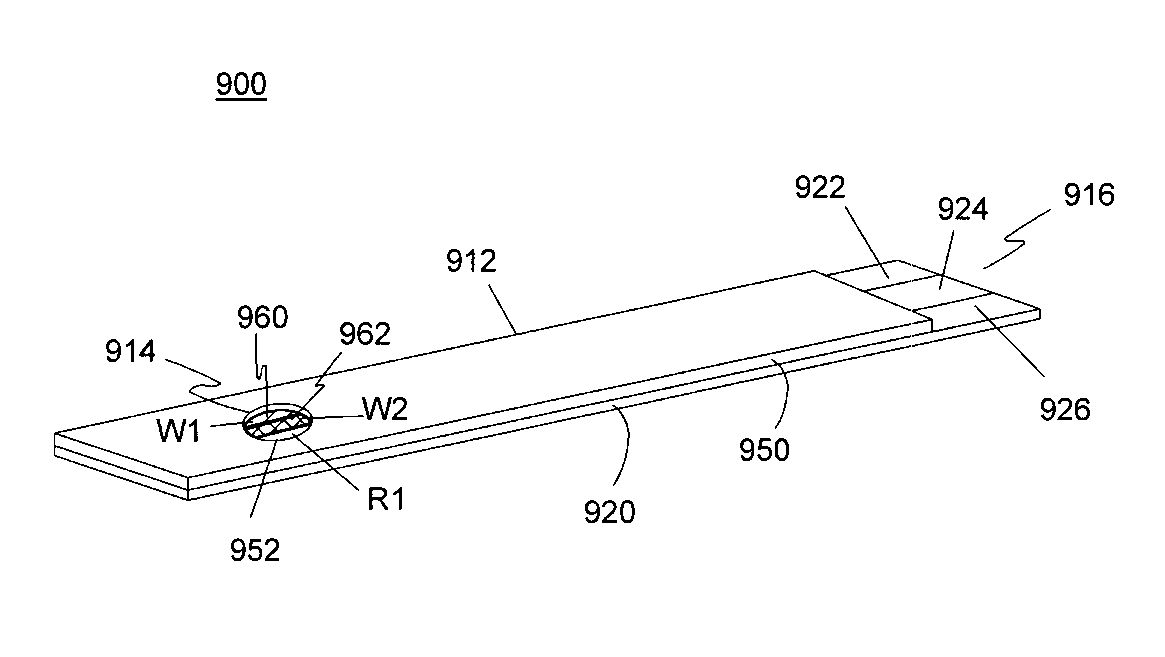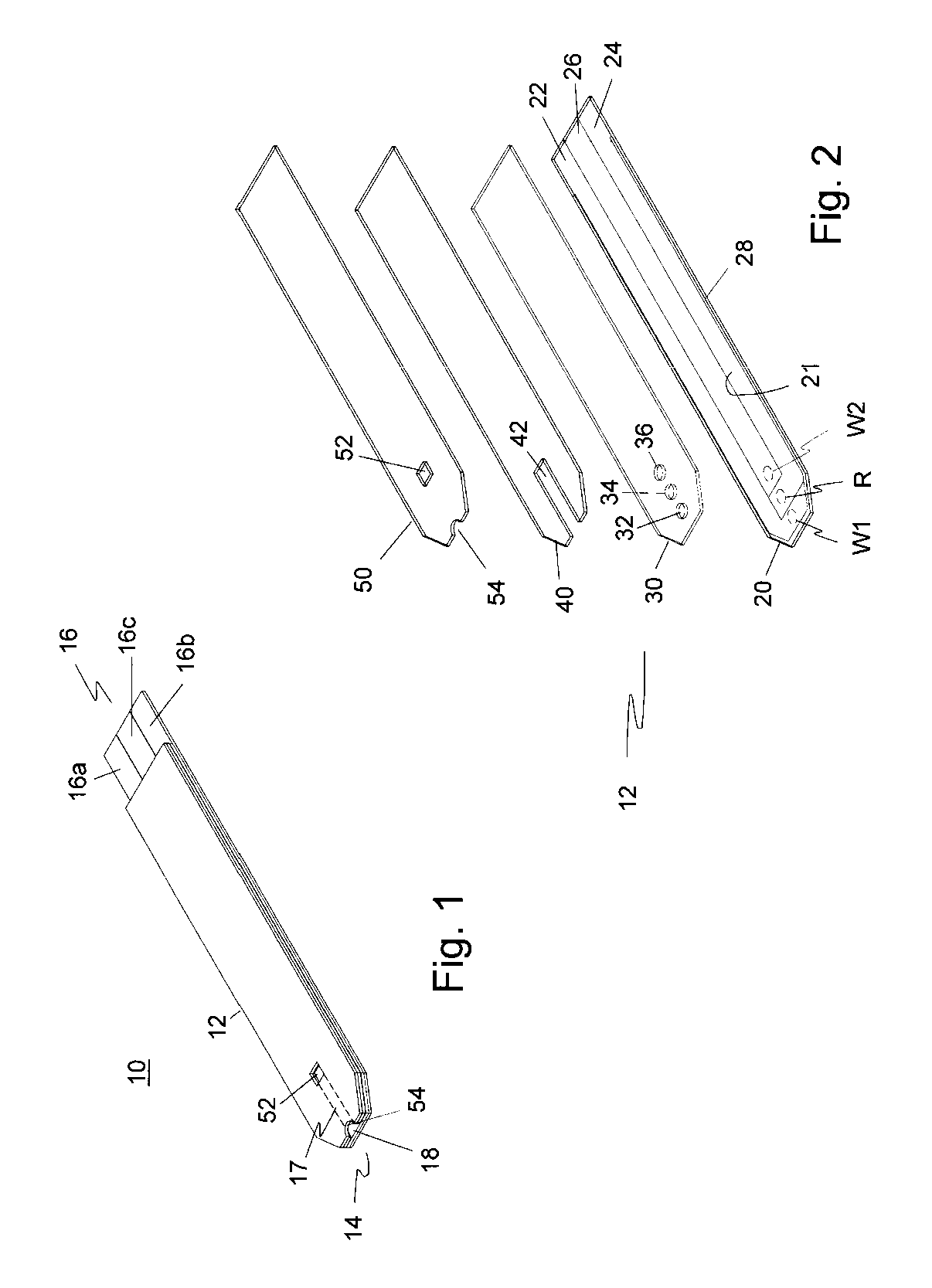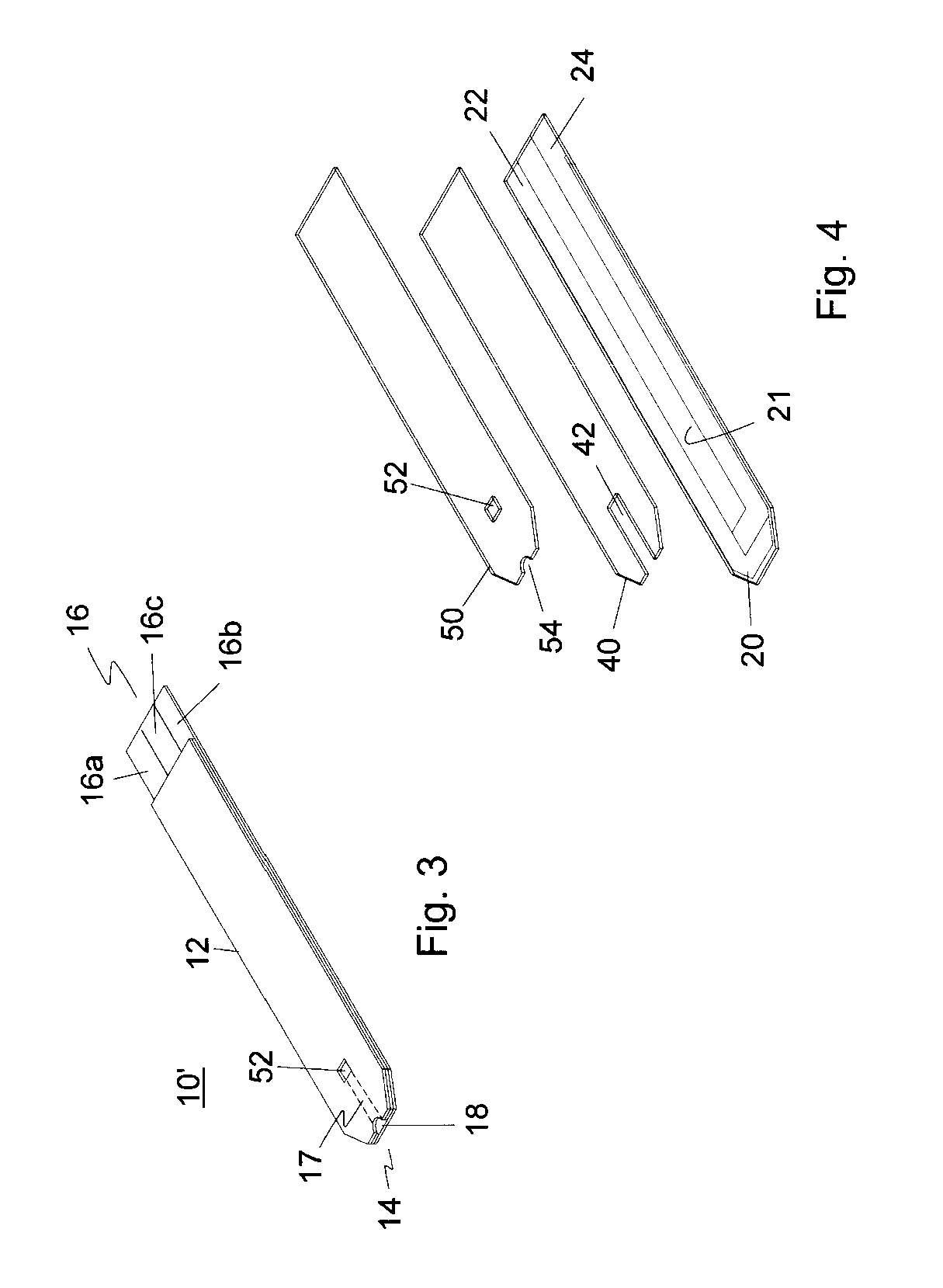Glucose biosensor and method
a biosensor and glucose technology, applied in the field of biosensors, can solve the problems of coma and death, hypoglycemia, and improper treatment of diabetes from time to time, and achieve the effect of accurate results and minimal interference from dissolved oxygen
- Summary
- Abstract
- Description
- Claims
- Application Information
AI Technical Summary
Benefits of technology
Problems solved by technology
Method used
Image
Examples
example 1
Demonstration of Current Response at Different Levels of pO2
[0130]Blood samples with different pO2 levels and different glucose concentrations were tested with the glucose strips of the present invention in connection with an Electrochemical Analyzer (CH Instruments, Model 812, Austin, Tex., USA). It has been found that the current responses at the first working electrode (i.e. GOD-based electrode) increase with decreasing oxygen concentration in the blood samples or decrease with increasing oxygen concentration in the blood samples. In order to illustrate such an oxygen effect, blood samples with three oxygen levels, i.e. 30, 90, 220 mmHg, were tested.
[0131]FIG. 20 shows the measured current response of the first working electrode (i.e. GOD-based electrode) to varying glucose concentrations at pO2 levels of 30 and 90 mmHg. The current responses are linear to the glucose concentration throughout the glucose concentration range tested for the two levels of oxygen. However, as expect...
example 2
Correlation Between Glucose Concentration Using the Glucose Strips and Glucose Readings at a Reference Analyzer
[0135]The two working electrodes (W1 and W2) of the glucose strips were calibrated at pO2 level of 90 mmHg using a reference analyzer (YSI Glucose Analyzer). The glucose concentrations (C1 and C2) resulting from the two working electrodes were plotted against the corresponding readings from the YSI Glucose Analyzer. The correlation plots are shown in FIGS. 24 and 25, respectively. The correlation equations and regression constants are given below:
GOD-based electrode:C1=0.9426CYSI+8.6829,R2=0.9981 (1)
GDH-based electrode:C2=1.0351CYSI+1.1208,R2=0.9977 (2)
[0136]It is obvious that the resulting concentrations from both working electrodes correlate well with the reference analyzer. As a result, either one can be used as a glucose sensor at an average pO2 level of 90 mm Hg.
example 3
Demonstration of Selection of the Electrode Responses—Oxygen Effect
[0137]As the oxygen level of a real blood sample is unknown, one should take the advantage of GDH, which is virtually independent of oxygen concentration and preferably to be used for the determination of glucose. However, as discussed above, the GDH-based working electrode suffers from interference from other sugar, such as, galactose and maltose, which significantly increase the response and thus cause the glucose readings to be inaccurate (see below). In this case, the response from GOD-based working electrode has its advantage. Therefore, a predetermined value or cutoff is needed to decide which working electrode should be selected.
[0138]As mentioned above, the average change of the glucose concentration for the pO2 varying from 30 to 90 mmHg is about 24.3 mg / dL at the GOD-based working electrode. This value was chosen as the predetermined value or cutoff value in determining the selection of which electrode resp...
PUM
| Property | Measurement | Unit |
|---|---|---|
| oxygen partial pressure | aaaaa | aaaaa |
| oxygen partial pressure | aaaaa | aaaaa |
| concentration | aaaaa | aaaaa |
Abstract
Description
Claims
Application Information
 Login to View More
Login to View More - R&D
- Intellectual Property
- Life Sciences
- Materials
- Tech Scout
- Unparalleled Data Quality
- Higher Quality Content
- 60% Fewer Hallucinations
Browse by: Latest US Patents, China's latest patents, Technical Efficacy Thesaurus, Application Domain, Technology Topic, Popular Technical Reports.
© 2025 PatSnap. All rights reserved.Legal|Privacy policy|Modern Slavery Act Transparency Statement|Sitemap|About US| Contact US: help@patsnap.com



